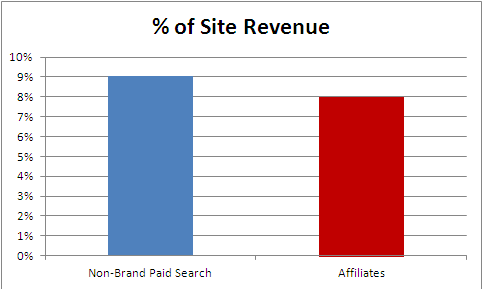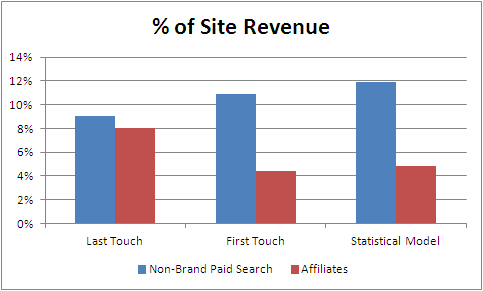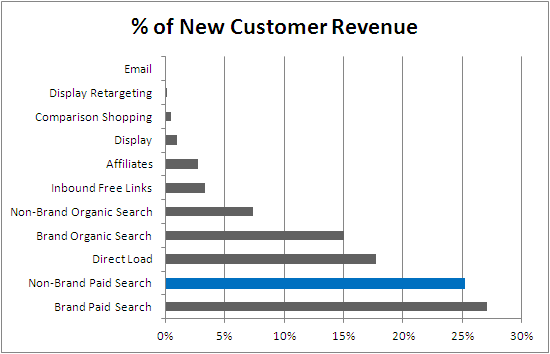Analyzing Paid Search To Maximize Customer Acquisition
Sophisticated marketers think about building business from two different constituencies: new customers and repeat customers. In industry vernacular, this is often framed as customer acquisition and customer retention. And sometimes, marketing efforts are split along these lines. Paid search is a tremendous vehicle for both of these constituencies. In the case of new customers, ads […]
Sophisticated marketers think about building business from two different constituencies: new customers and repeat customers. In industry vernacular, this is often framed as customer acquisition and customer retention. And sometimes, marketing efforts are split along these lines.
Paid search is a tremendous vehicle for both of these constituencies. In the case of new customers, ads draw attention to the advertiser’s brand and, when clicked, lead to great brand exposure and sometimes, revenue to boot. In the case of existing customers searching on competitive general search terms, ads allow us to remind customers that a company they’ve done business with has the goods/services they need, helping to capture more share of that customer’s budget.
New Customer Acquisition is critical because every business has some level of customer attrition. At minimum, a business must replace that natural attrition pool, and growing businesses must do far more than that.
The Benefits Of Tracking Customer Types
As such, I want to focus attention on the merits of tracking customer types and understanding how attribution effects can distort one’s view of customer acquisition drivers.
This is a simple data dive to show the power of good tracking and a wee bit of analysis. Our client passes us information re: new versus existing customer type, and we have our attribution tracking tags on their site to show us all online visits from a variety of sources. I grabbed a week’s worth of orders for the sake of simplicity.
The first question we might ask is, how important to e-commerce revenue is non-brand paid search? For this client this week, the answer is 9% of revenue. That’s big! It’s also quite comparable to their affiliate marketing program, which is 8% of revenue. On the surface, it may appear that these programs are about equally important to the business.
A wise marketer might say, “But wait! How are you tracking performance? If you’re looking at last touch, paid search might be over credited or under credited.”
Excellent point, wise marketer! Let’s look at the numbers!
So, if we take a few different looks at the numbers, it’s pretty clear that smarter attribution (in this case we used RKG’s proprietary attribution modeling) shows non-brand paid search drives significantly more revenue than affiliates, even though by last-click metrics they are quite close. Well, that’s great to know! But there is more.
What Channels Drive New Customers?
If we look at what channels drive new customers, more interesting data is revealed.
First, let’s determine what fraction of the revenue driven by paid search and affiliates comes from new customers based on smart attribution:
Clearly, a larger fraction of paid search revenue comes from new customers.
But wait! Looking at the new customer breakdown for paid search combines two wholly different animals: brand and non-brand search. Let’s split them apart and see what that tells us:
Undoubtedly, those who lump brand and non-brand search data together will be stunned to see the results are so dramatically different in terms of new customer acquisition. (I don’t have much sympathy for those folks because we’ve been arguing forever that you can’t lump those two together!)
Others might be surprised that brand search drives any new customers; but remember the power of word-of-mouth marketing and offline marketing. This client advertises on TV and radio, so some new customers will hear an ad and do a search for the company’s name. All good! Needs to be treated differently, but all good.
As you can see, 63% of non-brand paid search revenue is from new customers! That’s the highest percentage of any channel: comparison shopping engines are second at 55%, and only 17% of affiliate revenue comes from new customers.
Smart Attribution Is Critical
The way we take apart the numbers has a massive impact on how we view our marketing efforts. Last-click attribution shows 9% of revenue tied to non-brand search. But the combination of smart attribution and a focus on customer acquisition yields something amazing: non-brand paid search drives more than 25% of all new customer acquisition! That’s huge. Affiliates, by comparison, drive only 2.7% of new customer acquisition.
Where should this client put more money? Looking strictly at revenue by last-click attribution, the answer isn’t obvious. Looking at smart attribution and customer type information, the answer is quite obvious.
If we take this new customer focus across all channels using smart attribution modeling, we see a pretty startling picture:
Looking at this breakdown, where would you have leverage to get more? SEO, perhaps, but you may already be trying as hard as you can to maximize that. Brand search? You’re at the top of the page, so not much leverage there. Direct load? Umm, good luck optimizing that. All of these speak to the importance of other marketing efforts that create brand awareness and get consumers to navigate directly to the site; but in terms of knobs you can dial up and down quickly, non-brand paid search clearly gives the most leverage.
Moreover, taking this customer type data at a granular level allows us to look within non-brand data to find particular keywords or even particular geographies that tend to drive more new customers than average.
Raising the bar on mature paid search programs often involves getting a clearer and clearer picture of the full value of search, and attribution challenges can cloud that picture. With clear vision comes better driving!
Happy motoring!
Contributing authors are invited to create content for Search Engine Land and are chosen for their expertise and contribution to the search community. Our contributors work under the oversight of the editorial staff and contributions are checked for quality and relevance to our readers. The opinions they express are their own.
Related stories
New on Search Engine Land





